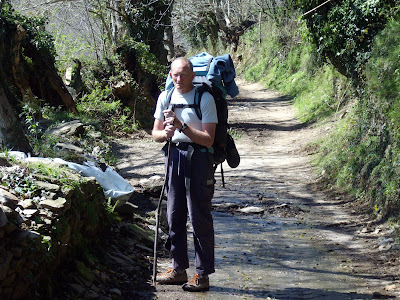

Why this great interest in Santiago de Compostela? Why walk that distance? Why not worry about all difficulties involved? Why, why, why? Paying homage to Saint James is a bit old fashioned, but it is what most pilgrims do at the cathedral in Santiago de Compostela. Saint James can be found in the centre with his hand resting on a walking stick. On arrival into the cathedral all pilgrims place their hand on the central pillar of the door, it is known as the pilgrim's pillar and the pilgrim does this as if to say "I got here safely". Above the main altar you see a statue of Saint James. The apostle's grave is found in the crypt, behind the main altar. The pilgrim has completed his journey upon kissing the hem of the jeweled cloak that drapes the statue. A dome above the crossing contains the pulley mechanism to swing the butafumeiro, which is a famous incense burner found in this church. It was created in 1851 by a goldsmith named Jose Losada. It is the largest incense burner in the world, weighing 80kg and measuring 1.60 meters in height, during certain important religious days and all pilgrims' mass, it is attached to the pulley mechanism, filled with 40 kg of charcoal and incense. Eight red-robed tiraboleiros pull the ropes and bring it into a swinging motion almost to the roof of the transept, it reaches speeds of up to 60 km/h and dispenses thick clouds of incense. One explanation of this custom which originated more than 700 years ago is that it assisted in masking the stench created by hundreds of unwashed pilgrims. I am so glad I made the effort to attend this service as this tradition is very special and a great way to end our pilgrimage to Santiago de Compostela. Afterwards we say goodbye to the many friends we have met along the way and leave Spain for Holland.





















